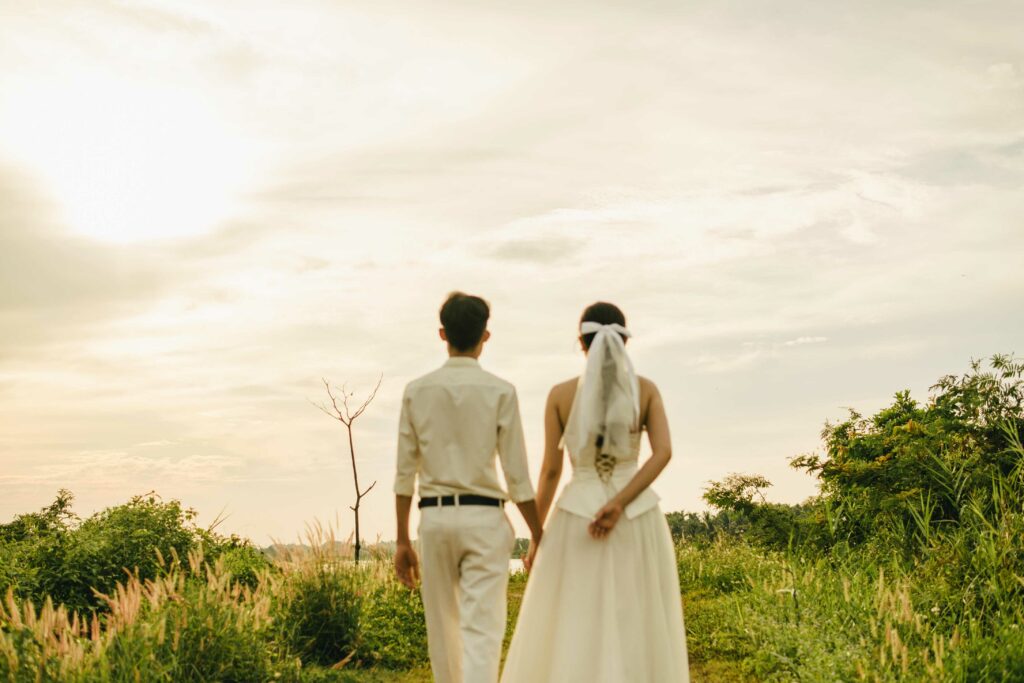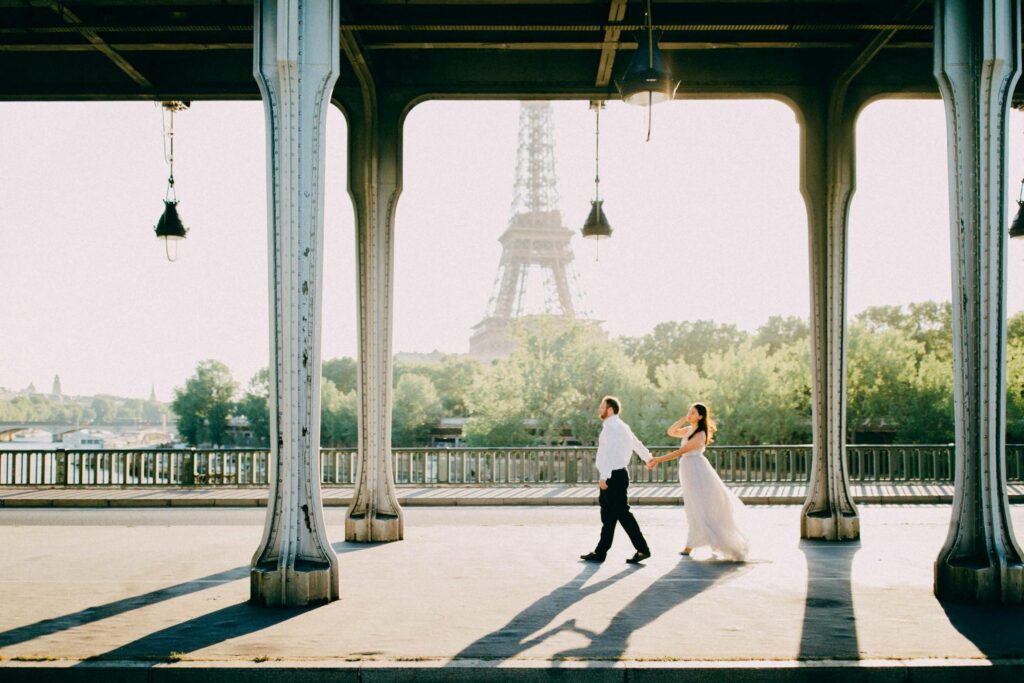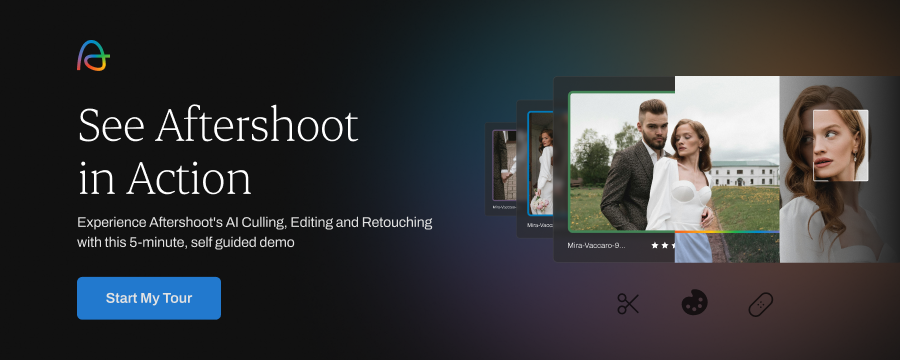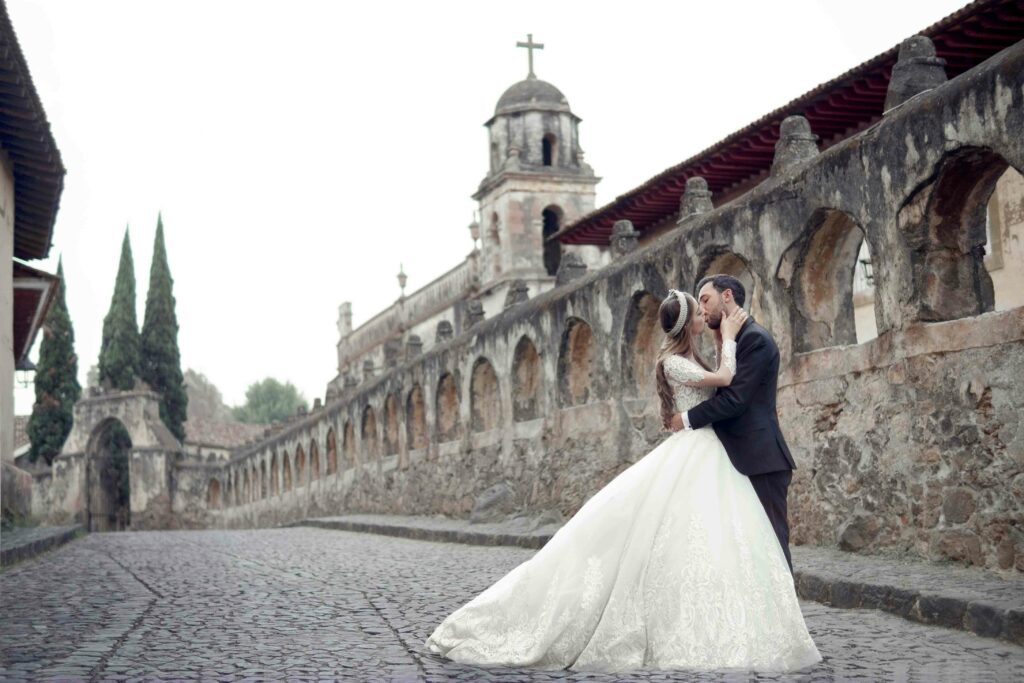Destination Wedding Photography: A Complete Guide
Shooting a destination wedding looks glamorous on Instagram—ocean views, new cultures, perfect sunsets. In reality, it’s one of the toughest gigs you’ll ever take on. You’re juggling travel logistics, unfamiliar lighting, local vendors, and tight timelines, all while keeping your couple calm and confident.
Clients are relying on you to deliver consistently, no matter where in the world the ceremony happens. That takes planning, adaptability, and a workflow that can handle thousands of RAWs on the go.
In this guide, we’ll cover how destination wedding photographers actually manage it—from travel prep and backup strategies to using AI tools to streamline those endless edits from a hotel room with sketchy WiFi. Because when you’re shooting in three countries in a month, “I’ll edit when I’m home” doesn’t cut it.
TL;DR: What Destination Wedding Photography Really Takes
- Destination couples are moving from "document our day" to "create our adventure story." They're embracing hyper-curated experiences that account for every detail, from attire to decor, to tell a full story for the couple.
- It’s not just travel + weddings — it’s logistics, light, and workflow discipline. Destination weddings test how well you plan, communicate, and manage files on the road.
- Prep is 80% of success. Scouting remotely, managing backup gear, and syncing with vendors makes or breaks your shoot.
- Couples are increasingly expecting their wedding photos to be delivered faster than ever, with many photographers now providing sneak peeks or partial galleries within 24-48 hours after the wedding.
- Workflow efficiency matters more than ever. Long travel days mean less editing time — tools like Aftershoot help photographers cull and edit faster between flights.
- Consistency beats perfection. Couples expect your signature look across changing weather, venues, and cultures.
- Business-wise: Pricing, contracts, and travel clauses need to protect your time and profit.
If you want to shoot destination weddings sustainably, focus on workflow systems that travel as well as you do.
Destination Wedding Photography Gear, Setup and Lighting
Here's what every destination wedding shoot demands and what separates the pros from the amateurs who end up crying into their backup camera at 2 AM in Tuscany:
Essential Travel-Ready Camera Gear
- Backup everything: Two camera bodies minimum (preferably identical for muscle memory), duplicate lenses for every focal length you rely on, and backup memory cards that live in separate bags. Murphy's Law loves destination weddings.
- Weather-sealed gear: Whether you're shooting in the Dolomites or tropical beaches, your gear needs to handle whatever Mother Nature throws at you. Think Pentax K-3, Canon 5D Mark IV, or Nikon D850 territory.
- Versatile lens kit: 24-70mm f/2.8 for ceremonies and portraits, 85mm f/1.4 for stunning isolation shots, and a 16-35mm f/2.8 for those epic landscape-couple combinations that make destination galleries legendary.
- Lighting that travels: Off-camera flash with diffusers, LED panels for video work, and reflectors that pack small. Direct flash is making a major comeback in 2025, so don't shy away from that Speedlite, it might save your day when golden hour gets rained out.
Power, Backup and On-the-Road Storage
- Portable power solutions: Battery grips, external battery packs, and portable chargers. You can't always count on venue power access, especially at outdoor locations.
- Memory card strategy: Shoot dual-card setups with one CF/SD combo for immediate backup. Lost images = lost business in destination photography.
- International power adapters: Universal adapters and voltage converters for your charging stations. This sounds basic until you're in rural Greece with a dead camera battery.
Light Control for Unfamiliar Venues
- Master natural light variations: Destination weddings offer stunning photography opportunities that capture both the couple's love and the beauty of their chosen destination, but that beauty comes with challenging light. Practice shooting in open shade, using architectural elements as natural diffusers, and bouncing light off white walls and sand. If you need more guidance, check our natural light portrait photography guide or our outdoor wedding photography guide from pro wedding photographer, Paul.
- Flash for environmental portraits: Use rear-curtain sync to capture moving elements (flowing dress, dancing guests) while keeping your couple sharp against stunning backgrounds.
- Golden hour planning: Research your location's light patterns beforehand. Apps like PhotoPills become essential for planning ceremony timing and golden hour portrait sessions.

How to shoot destination wedding
Pre-Trip Research, Scouting and Client Communication
Location scouting and research:
The biggest mistake destination photographers make? Showing up without doing their homework. Booking a destination photographer isn't just about flights, it includes scouting locations in advance and understanding the cultural and logistical landscape you're entering.
Google Earth becomes your best friend for aerial views, but also join Facebook groups for local photographers, research sunset/sunrise times, and understand any permit requirements. Some locations, like national parks or historic venues, require special permits that can make or break your shoot.
Client communication and expectation management:
Create detailed destination-specific prep guides covering everything from weather contingencies to local customs. Share mood boards that incorporate the destination's unique aesthetic whether that's the romantic coastlines of Northern Ireland or the dramatic landscapes of the Swiss Alps.
Set clear expectations about delivery timelines, especially since you'll be traveling. Many couples assume destination equals delayed delivery, but smart photographers use this as a competitive advantage by delivering sneak peeks within 48-72 hours.
Backup plan architecture:
Plan for three scenarios: perfect weather, challenging weather, and complete disaster. Have indoor alternatives scouted, backup gear locations identified, and contingency timeline options ready. The couples paying $10K+ for destination photography expect professionals who thrive under pressure, not crumble.
During the shoot – shooting strategy & flow
Session flow adaptation:
Documentary-style storytelling is a growing trend, paired with editorial-inspired portraits that look straight out of a magazine. This is especially powerful for destination weddings where the location itself becomes a character in the love story.
Start with wide environmental shots that establish the setting, then move progressively closer for intimate moments. Don't just shoot the couple, capture their guests experiencing the destination magic. Those wide shots of everyone dancing under Tuscan stars or laughing on a Mexican beach become some of the most treasured images.
Cultural sensitivity and integration:
Respect local customs while incorporating unique cultural elements into your shots. If you're shooting in Japan during cherry blossom season or at a beach ceremony in the Caribbean, understand the significance and photograph with reverence, not just as exotic backdrops.
Camera settings for destination photography:
- Bright outdoor locations: Start with ISO 100-400, f/8-f/11 for sharp environmental shots, faster shutter speeds (1/250s+) to handle any movement.
- Indoor ceremony spaces: Higher ISO performance becomes crucial, push to ISO 1600-3200 confidently with modern cameras, use wider apertures (f/2.8-f/4) for available light.
- Mixed lighting scenarios: Manual white balance becomes essential when mixing natural light with local tungsten or LED sources.

Composition and storytelling:
Gen Z couples are drawn to powerful, standalone shots that convey atmosphere, emotion, and style in one frame. Think dramatic lighting, unconventional poses, and creative compositions that could stand alone or as part of a carousel.
Use the destination's unique architecture, natural features, and cultural elements as compositional tools. Frame couples within ancient arches, use rolling waves as leading lines, or capture silhouettes against iconic skylines. But remember, the location should enhance the story, not overshadow the emotion.
Post-Processing Workflow for Destination Wedding Photography
Post-processing for destination weddings is all about adaptability. You’re working across shifting light, mixed environments, and sometimes limited gear — meaning your editing workflow needs to be consistent, fast, and portable.
Step 1. Cull on the go—don’t wait to get home
Most destination photographers shoot 4,000–6,000 images per event. Waiting to start culling until you’re back home is a recipe for burnout. The smarter approach? Cull while you travel.
Import, back up, and let Aftershoot cull handle the first pass while you rest or transit. Its AI filters out duplicates, blinks, and missed-focus shots automatically, so by the time you land, you’re already working from a tight, usable selection.
Aftershoot's One-Click Cull & Edit feature is designed exactly for this scenario. You can process entire destination wedding galleries with consistent style application while maintaining the quality standards your couples expect. It's like having a skilled assistant who works at lightning speed and never needs a coffee break.
Step 2. Build a mobile-ready editing setup
Editing in airports or hotel rooms isn’t ideal, but it’s the reality. Keep a portable workflow: external SSDs, HDDs, a color-calibrated laptop, and presets synced across devices. If you use Aftershoot Edits, you can apply your signature style across the entire gallery, no matter which country you’re in (coz no internet required, duh!), and keep your edits consistent under mixed lighting conditions.
Step 3. Match the mood, not just the exposure
Destination weddings shift from bright exteriors to candlelit dinners in seconds. Batch-correct your images by lighting scenario first—beach ceremony, indoor reception, city portraits before doing any detailed adjustments. The goal is for the final gallery to feel cohesive, even if the light sources couldn’t be more opposite.
Different destinations demand different color grading approaches:
- Tropical locations: Enhance blues and greens while protecting skin tones from oversaturation
- European cities: Warm architectural tones while maintaining the romantic golden hour magic
- Mountain destinations: Rich, dramatic contrasts that emphasize the majestic landscape without overwhelming intimate moments
Step 4. Retouching for Fast Previews
Retouching on the go is about efficiency, not perfection. Focus on the small things that elevate portraits without killing travel time—smoothing blemishes and acne, brightening eyes, etc. Aftershoot’s Retouching Presets can automate those base corrections while keeping natural texture intact, so your couple still looks like themselves (just better lit). It’s a quick polish that helps you deliver consistent portraits before you even unpack.
Step 5. Backup and Delivery With Weak Wi-Fi
Every photographer learns this the hard way: hotel Wi-Fi is not your friend. Always back up to dual SSDs and a cloud service before you move locations. Many destination shooters share a small preview gallery while still traveling and finalize full delivery once they’re back in a stable setup—a workflow that keeps clients excited without risking data loss.
If you’re curious how AI fits into that workflow, you can test Aftershoot’s culling, editing, and retouching tools in a free demo. It’s built to handle exactly the kind of high-volume, fast-turnaround work destination photographers face every season.

Popular Editing Styles for Destination Wedding Photography
True color editing is becoming a defining trend in wedding photography for 2025, prioritizing the natural beauty of the scene and focusing on accurate skin tones and true-to-life color representation. This approach is perfect for destination photography where couples want the authentic beauty of their chosen location preserved.
For destination weddings, consider these trending styles:
- True-to-color with enhanced vibrancy: Maintain authentic skin tones while boosting the natural beauty of exotic locations like Demi Lovato had at her wedding

- Editorial fashion-forward: Editorial elegance is all about transforming wedding portraits into artful, cinematic masterpieces, where every frame looks like it belongs in Vogue

- Film-inspired with texture: The elegance of black-and-white imagery brings depth to even the most fleeting moments, while the casual nature of point-and-shoots ensures that each shot feels spontaneous

Check out the Aftershoot marketplace for destination-specific AI styles created by professional travel photographers.
How much does destination wedding photography make?
Travel fees for photographers usually range from $1,000 to $5,000+, depending on the destination's distance and cost of living, covering airfare, baggage, accommodations, transportation, and meals. But destination photography pricing isn't just adding travel costs to your local rates. You need to think about your value proposition.
Destination wedding photographers serve couples seeking unique, unrepeatable experiences. These aren't budget-conscious bookings—they're investment-level celebrations where photography becomes a crucial part of preserving memories that literally can't be recreated.
Industry rate ranges:
Entry-level destination photographers (1-3 years experience):
- Base package: $3,000-$5,000 + travel expenses
- Often building portfolio, may offer competitive rates to gain destination experience
- Limited to domestic or nearby international locations
Established destination specialists (4-8 years):
- Base package: $5,000-$8,000 + travel expenses
- Professional photographers with over 20-30 weddings under their belt who are in demand, known for what they do and have an established style
- Can command premium rates for expertise and reliability
Luxury destination photographers (8+ years):
- Base package: $8,000-$15,000+ (often inclusive of travel)
- Very established, with a set style and luxury-level offerings, can handle high-profile events, and will make you feel at ease about your photographs
- Limited availability, exclusive client base, often booked years in advance
Celebrity/ultra-luxury tier:
- $15,000-$50,000+ for multi-day coverage
- Exclusive locations, high-profile clients, complete creative control
Growth potential and scalability:
The Wedding photography market is projected to grow from USD 3.95 billion in 2025 to USD 6.48 billion by 2034, exhibiting a compound annual growth rate (CAGR) of 5.63%. Destination photography represents one of the fastest-growing segments within this market.
The scalability advantage: destination photographers can command higher rates while often working fewer total events per year. A photographer booking 15 destination weddings at $8,000 each earns more than someone shooting 35 local weddings at $4,000 each while experiencing incredible locations and building a premium brand.
Additional revenue streams:
- Multi-day coverage: Welcome parties, rehearsal dinners, day-after sessions
- Travel photography workshops: Teaching other photographers in exotic locations
- Stock photography licensing: Destination images often have commercial value
- Collaboration with destination wedding planners: Recurring referral relationships
Smart destination photographers treat each booking as more than a single event—they're building relationships with couples, venues, and planners that generate ongoing business in premium markets.
Destination wedding photography is a workflow game of its own
Destination wedding photography looks effortless in your feed — but behind every sunset portrait is a workflow built to survive airports, humidity, and 16-hour shoot days. The photographers who thrive are just great planners. They know when to prep, when to delegate, and when to let automation take over.
With wedding photo sneak peeks and partial galleries being the new norm, couples are increasingly expecting their wedding photos to be delivered faster than ever.
AI tools like Aftershoot have become an indispensable part of a photographer's workflow. Whether it’s culling thousands of travel images, applying your base look mid-transit, or retouching portraits that need to be client-ready before you’re home, smart automation keeps your workflow moving while you’re still on the road.
Ready to build a destination photography workflow that works as beautifully as your images? Try Aftershoot for 30 days and discover what happens when cutting-edge AI meets your creative vision.
